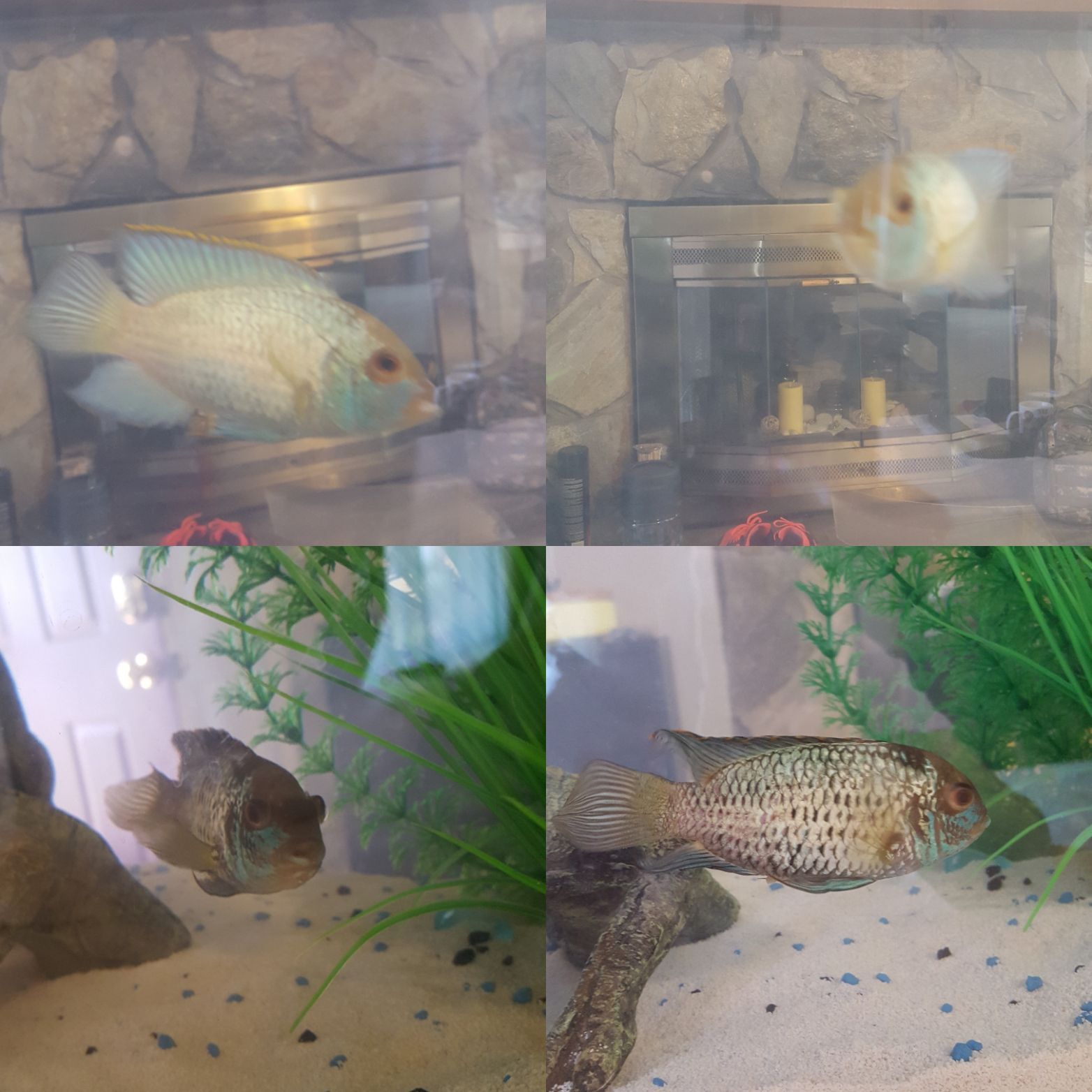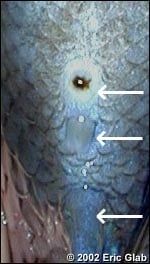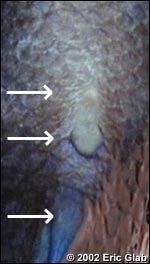I don't know too much about this fish species but I've found that a general rule for cichlids is that if the dorsal and anal fins are longer and come to a sharper point, it's a male. If the dorsal and anal fins are shorter and more rounded then it's a female. To me, the top pictures look like a female, and the bottom picture looks like a male. Male cichlids also tend to be bigger than females.
(edit) - I could very well be incorrect in my assumption of the genders of your two cichlids. I've done some further research and apparently the only way to tell with any degree of certainty as to the genders of the fish, you have to preform a process known as "venting".
"Determining the gender of monomorphic species requires a process commonly called "venting." This involves removing the fish (with wet hands) and examining their dorsal side, looking for the genital pore between their anus and anal fin. As these twopictures demonstrate, the more anterior pore is the anus, while the second pore is the genital papilla, or vent. The genital papilla (also called an ovipositor for females) is the pore through which the fish will excrete either eggs or milt.
Generally speaking, females will have a larger genital papilla than their male counterparts. This larger size is needed to accommodate the passage of eggs. This difference is more difficult to distinguish for substrate egg layers (e.g.,
Neolamprologus spp.) because their eggs are smaller than those of female Mouthbrooders.
There are some cases where certain species demonstrate pigment differences between the male and female vent. And with some species, males will have an elongated and tapered genital papilla, such as the Julidochromis regani. With these males you can move your finger across the vent region from left to right and the genital papilla will also move.
When venting your fish, be sure to handle the fish only with wet hands. I have found that grabbing them with a net gives me a little extra grip so that they can't slip out of my hands. Also be sure that you do not keep them out of water for more than about 30 seconds. You want to make this as un-stressful as possible, so try to keep the number of times you examine them down to no more than 3. Once you have sexed your cichlid, you will want to keep it separate from other un-sexed cichlids. Think about how you are going to address this before you start handling them." - Marc Elieson







